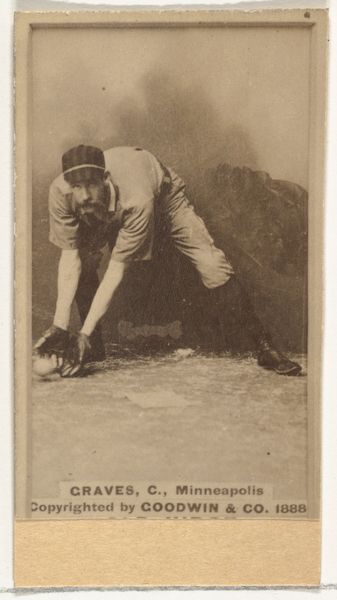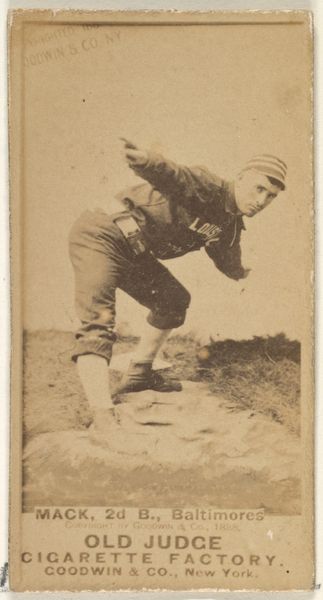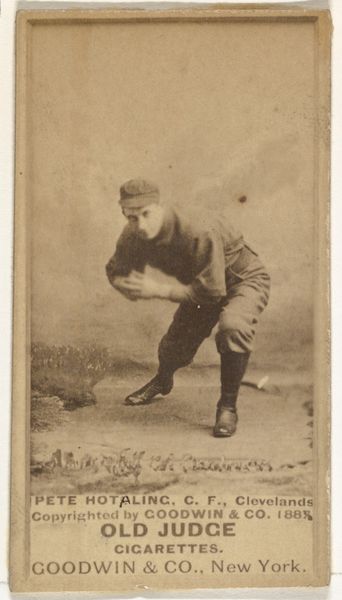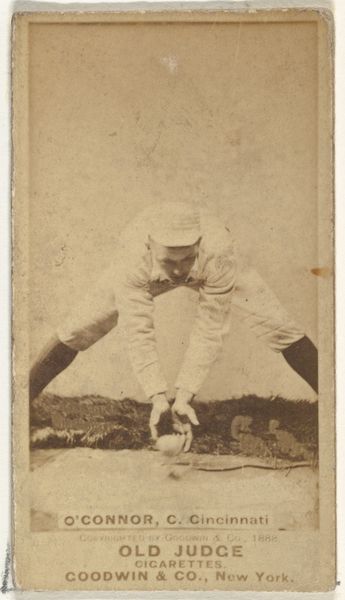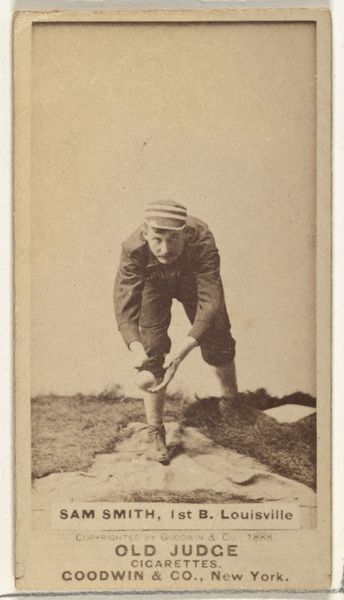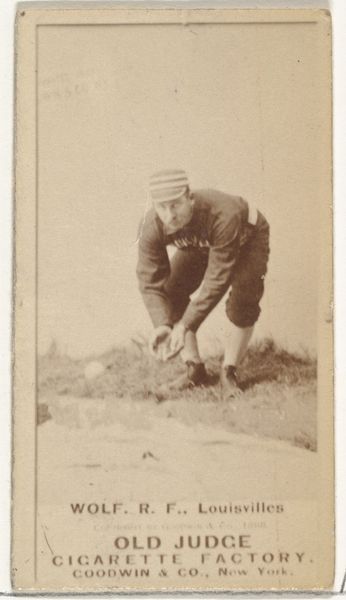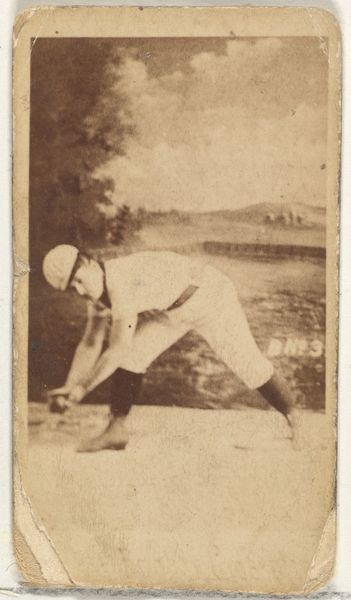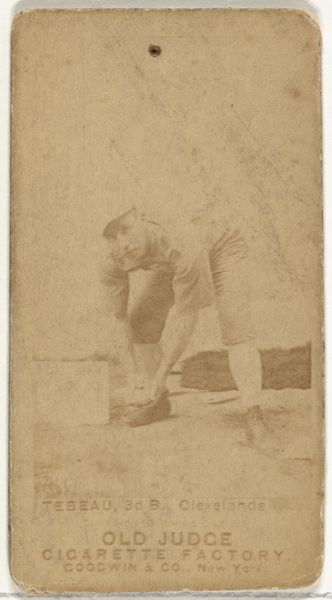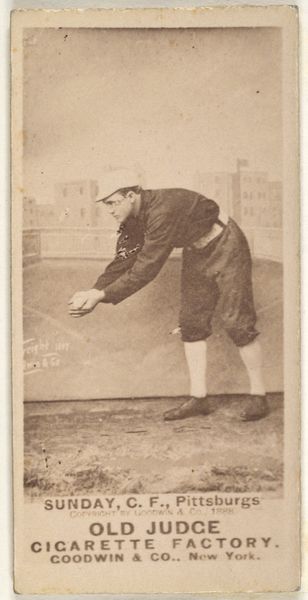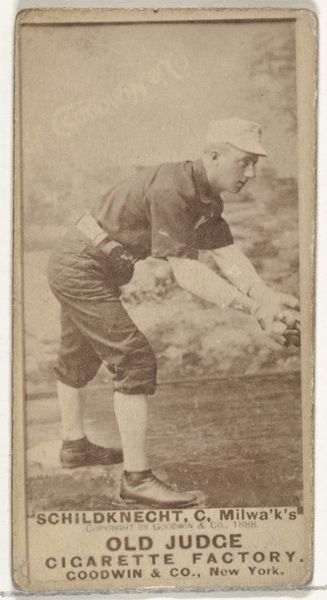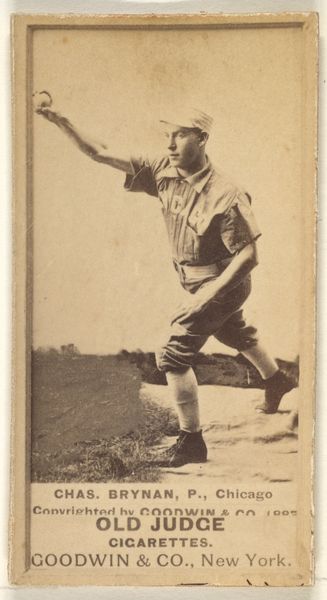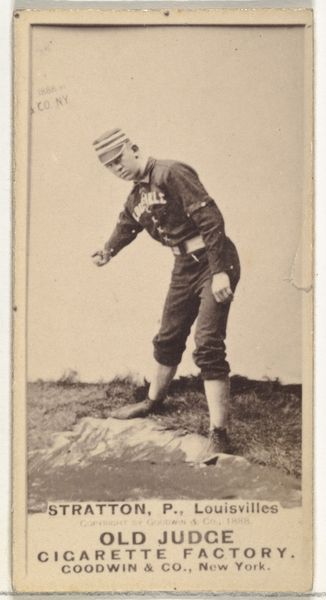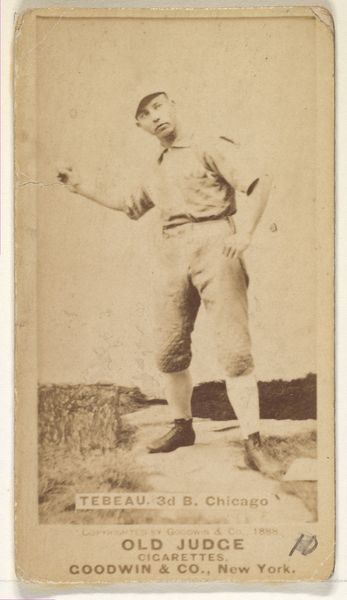
Oliver Wendell "Patsy" Tebeau, 3rd Base, Chicago, from the Old Judge series (N172) for Old Judge Cigarettes 1887 - 1890
0:00
0:00
drawing, print, photography
#
portrait
#
drawing
# print
#
baseball
#
photography
#
men
#
athlete
Dimensions: sheet: 2 11/16 x 1 3/8 in. (6.9 x 3.5 cm)
Copyright: Public Domain
Editor: So this is "Oliver Wendell 'Patsy' Tebeau, 3rd Base, Chicago" from the Old Judge series, dating to around 1887-1890. It's a photographic print, pretty small actually, I notice how his poised stance, slightly bent over and ready to throw, captures a moment of tension before action. What compositional elements stand out to you in this piece? Curator: The most striking aspect lies in the figure-ground relationship. Observe how the photographer manipulates light and shadow to sculpt Tebeau’s form. The tonal range is deliberately constrained, serving to flatten the image, yet simultaneously highlighting the subtle nuances of texture within his uniform and the surrounding landscape. Note how the diagonal of the path bisects the composition, leading the eye towards Tebeau, thereby reinforcing his centrality within the visual field. The choice to position him slightly off-center also prevents the image from becoming overly static, introducing a sense of implied movement. Editor: I hadn't considered how the path created a diagonal line! Do you think that the limited tonal range has anything to do with it being a mass-produced advertising image? Curator: Precisely. Consider the technical constraints of photographic reproduction at the time. Simplicity was paramount. Yet, even within those limitations, the photographer exercises a remarkable degree of control over the visual elements. The flattening effect we discussed forces the viewer to engage with the image not as a realistic representation, but as a carefully constructed arrangement of lines, shapes, and tones. Are we meant to engage with a particular psychological space, I wonder, that alludes to the game as a conceptual, rather than mimetic activity? Editor: That’s a fascinating perspective. I initially saw it as a simple portrait, but now I appreciate the artistry in its construction. Curator: Indeed, attending to form allows us to unpack so much more.
Comments
No comments
Be the first to comment and join the conversation on the ultimate creative platform.
